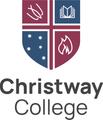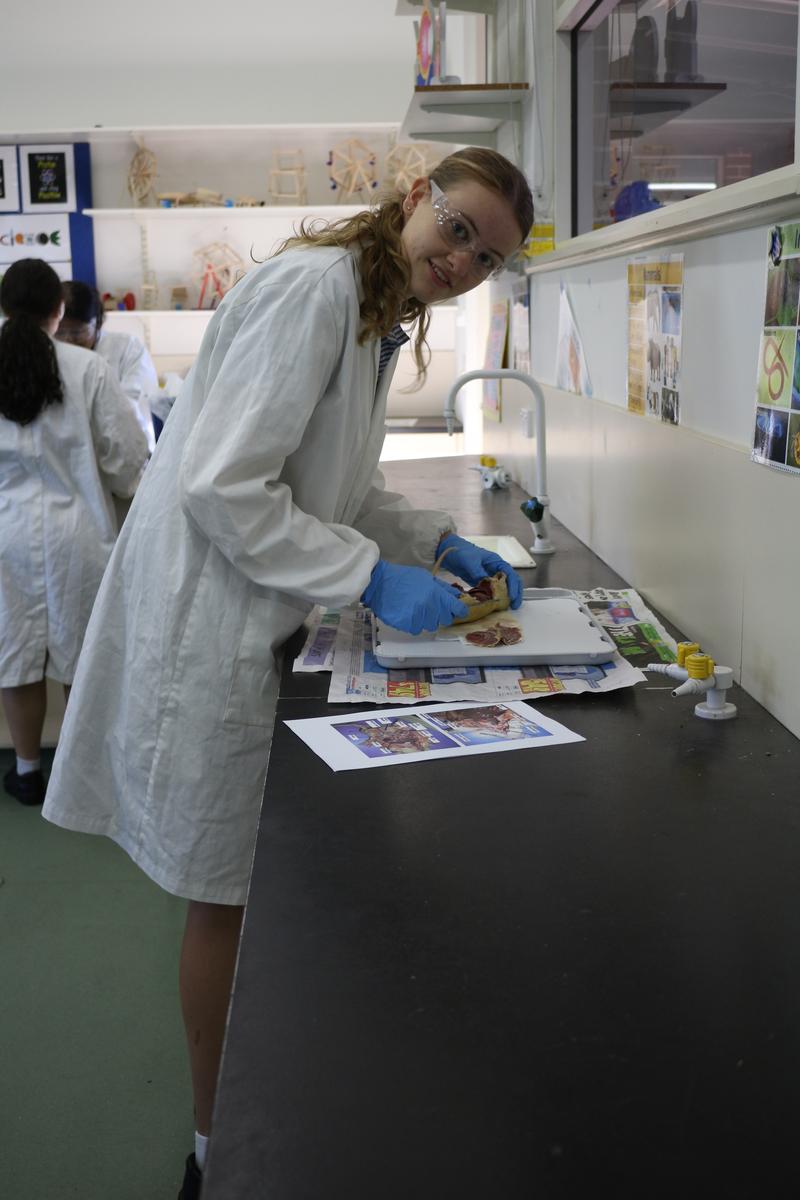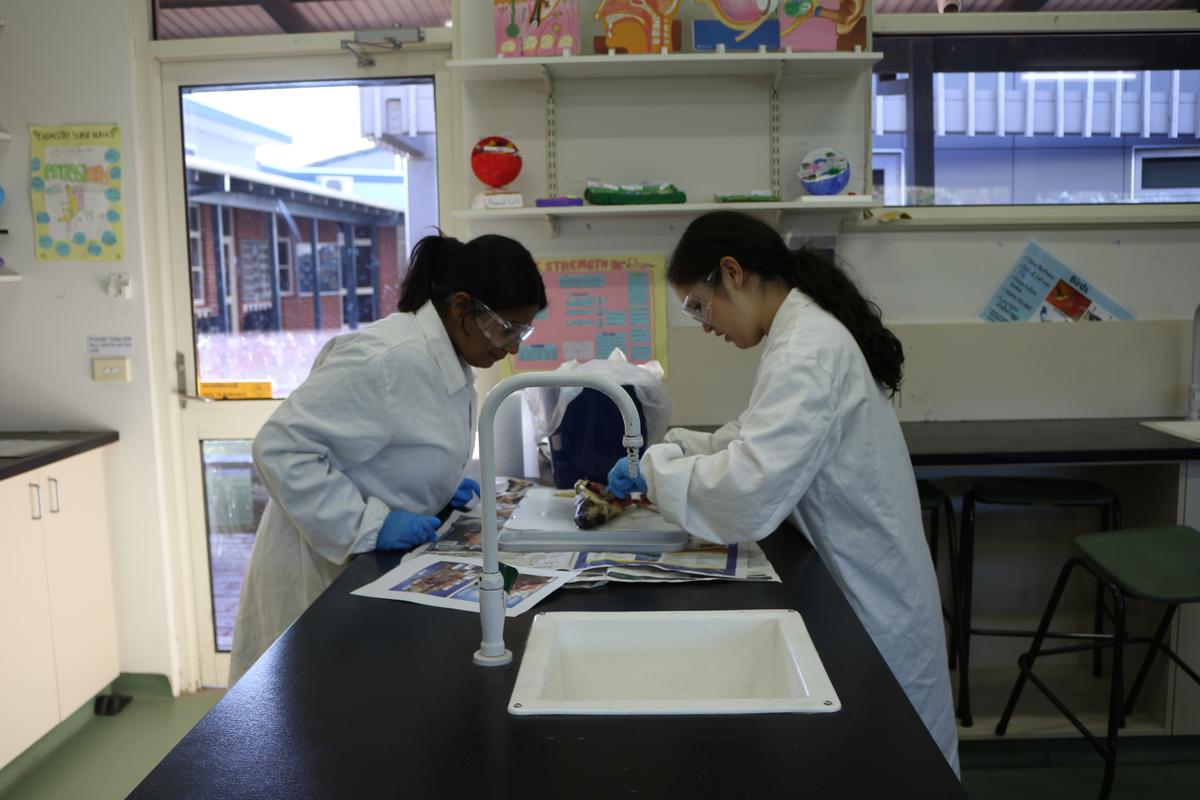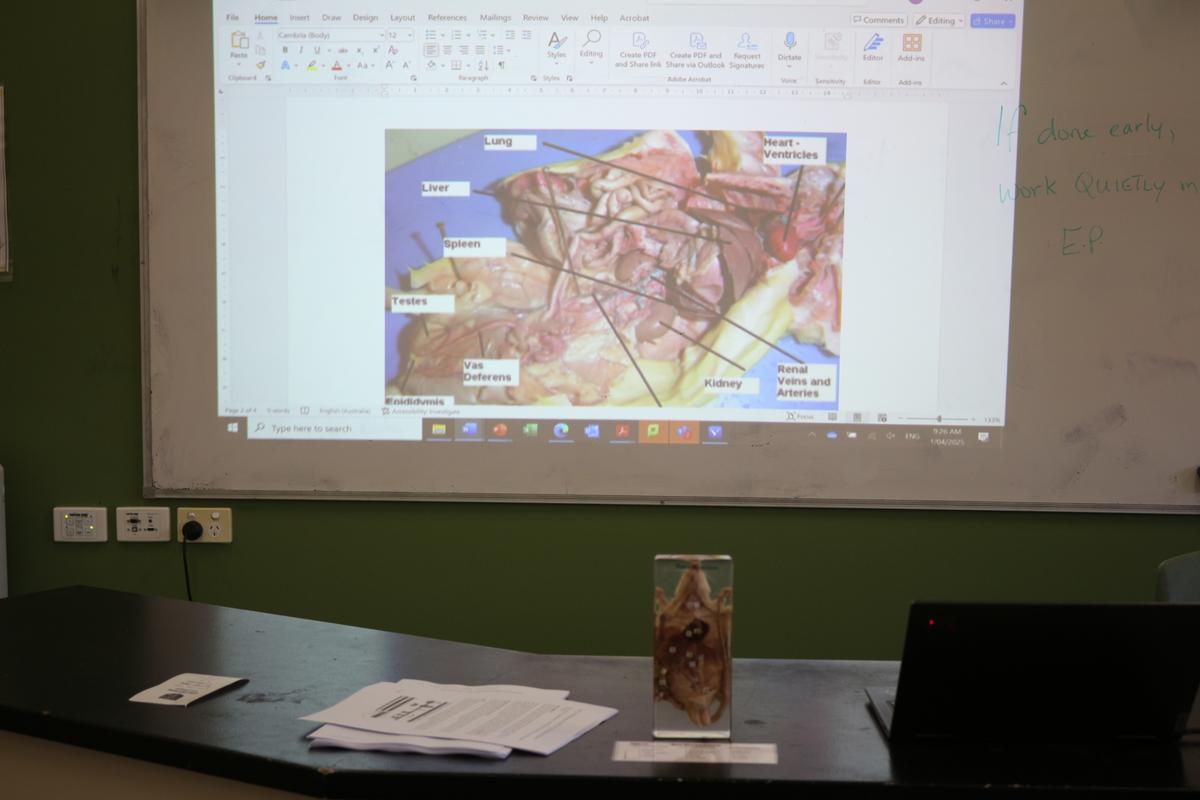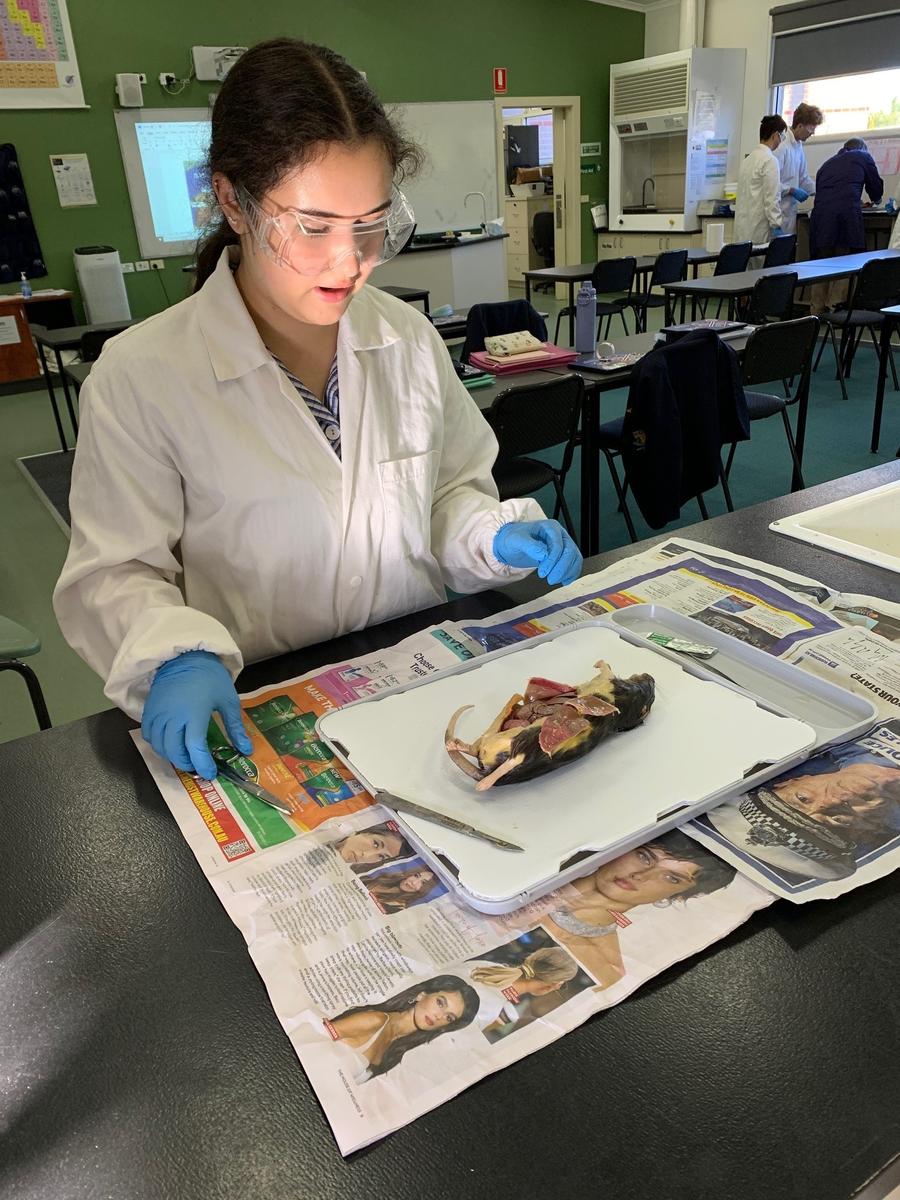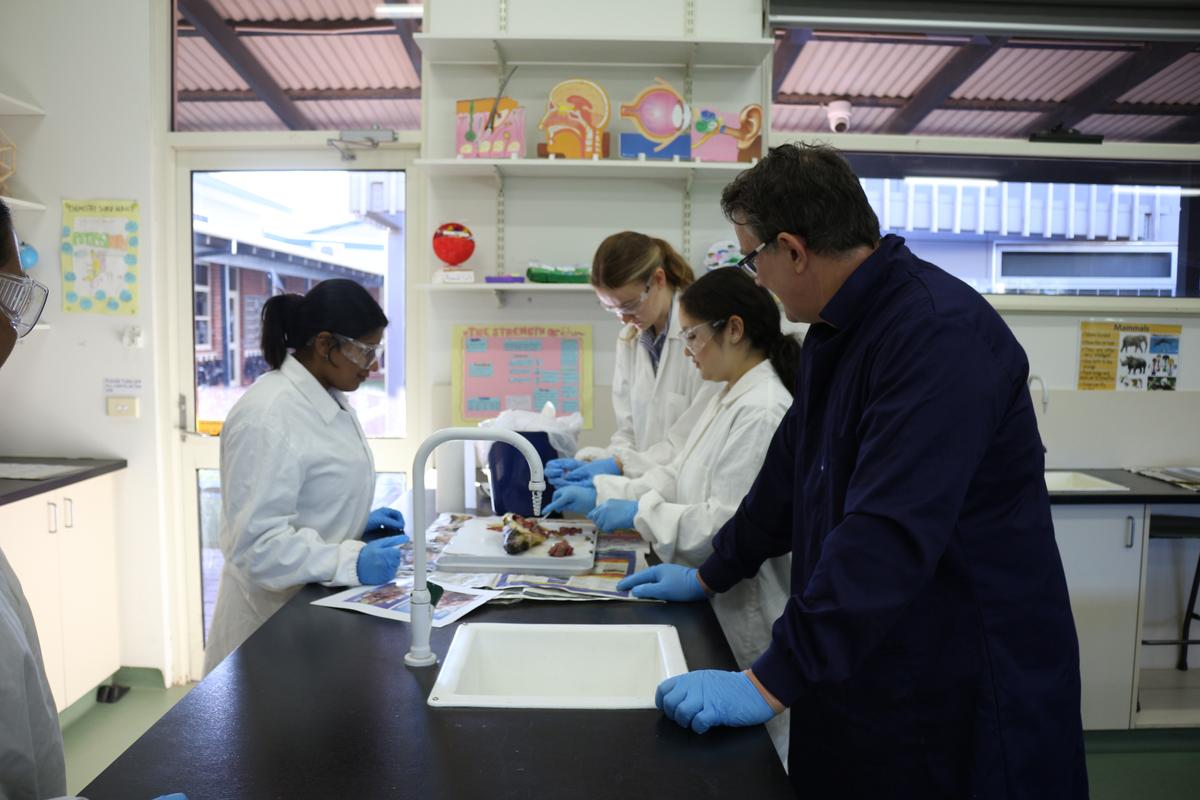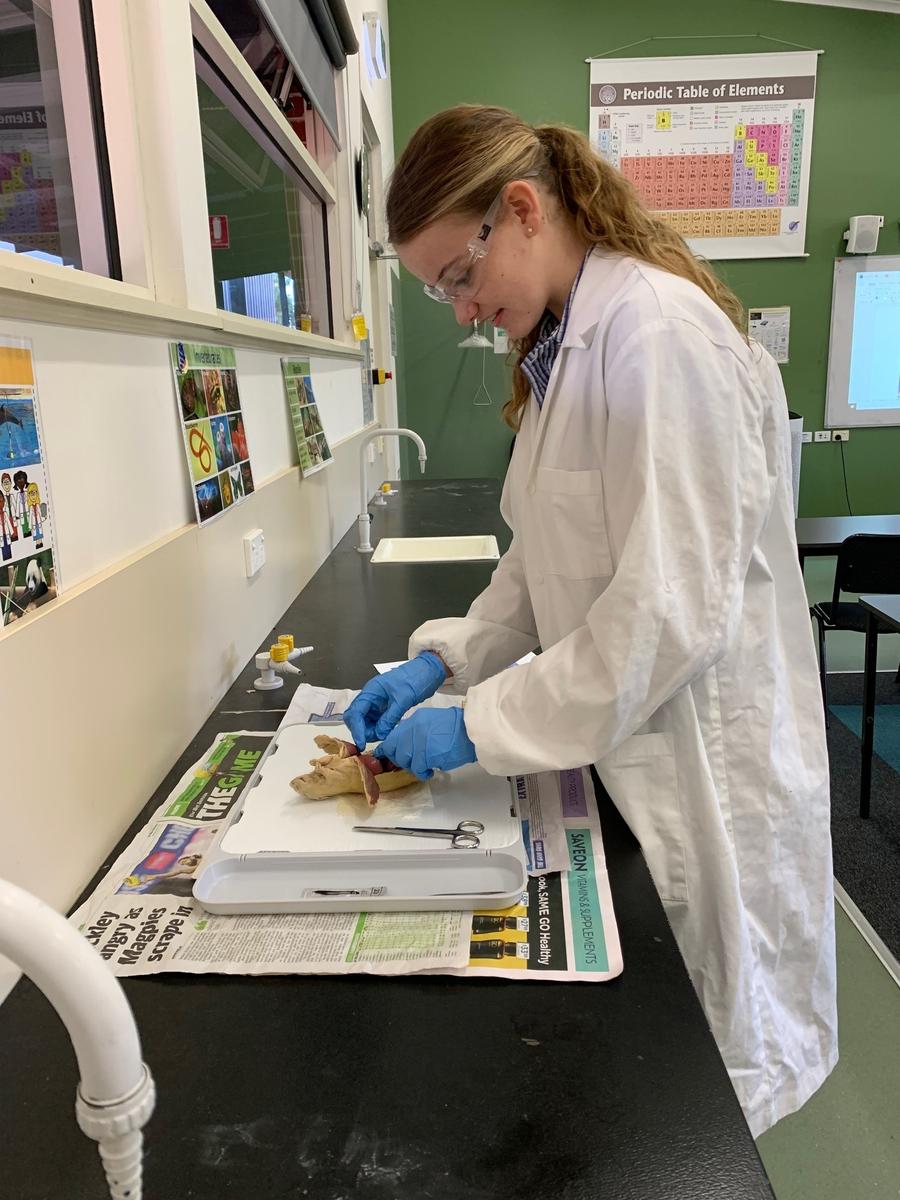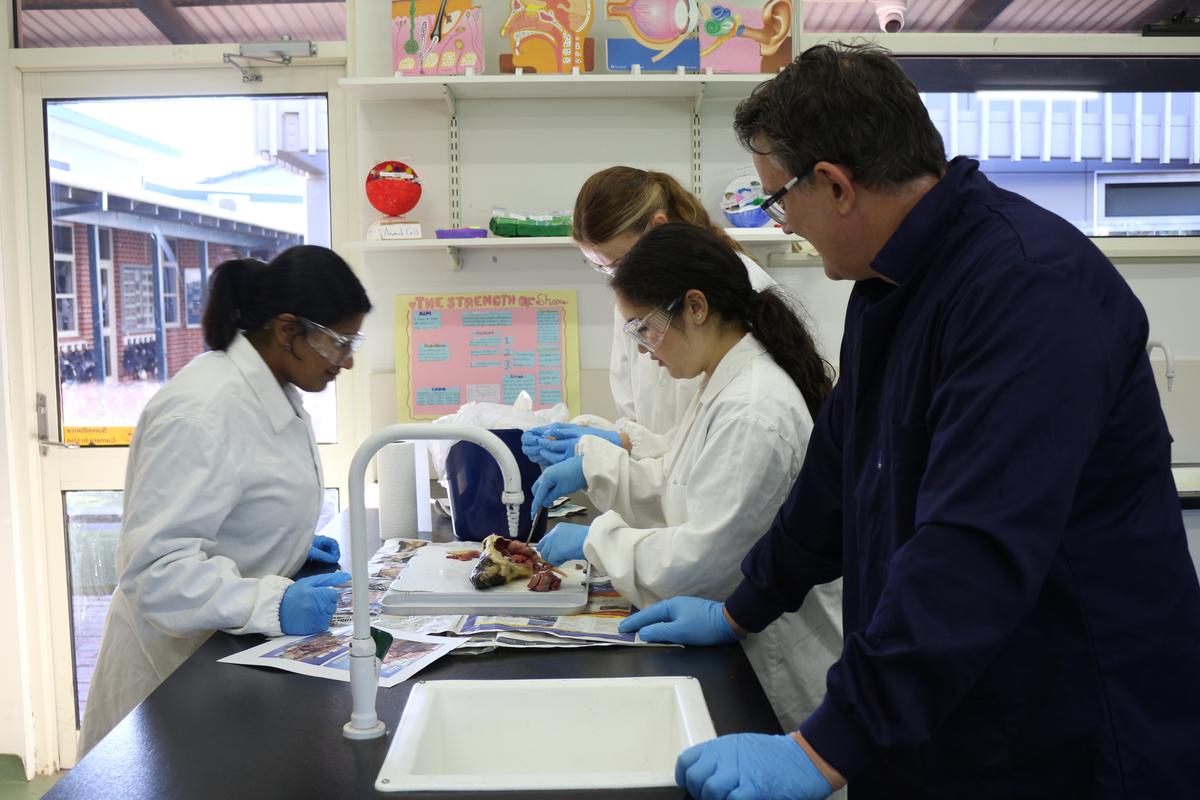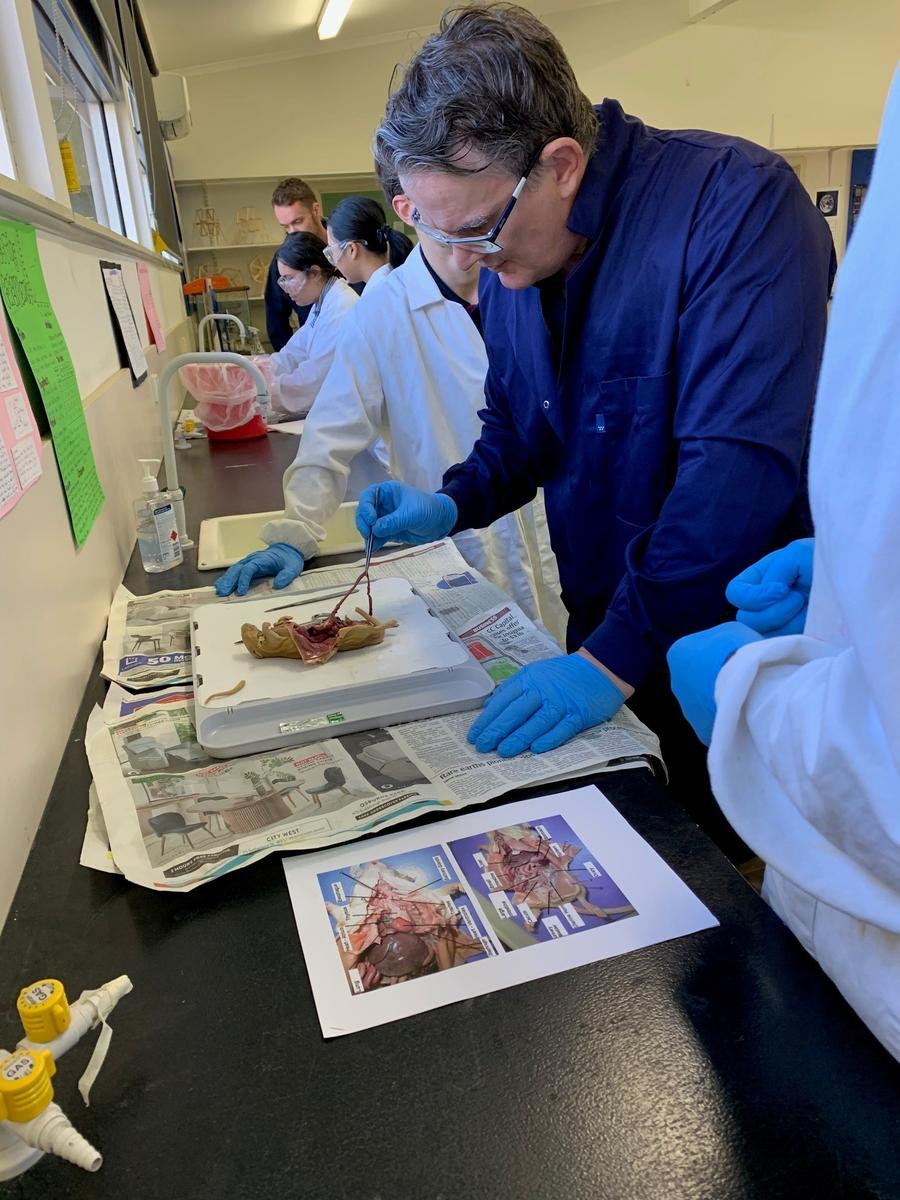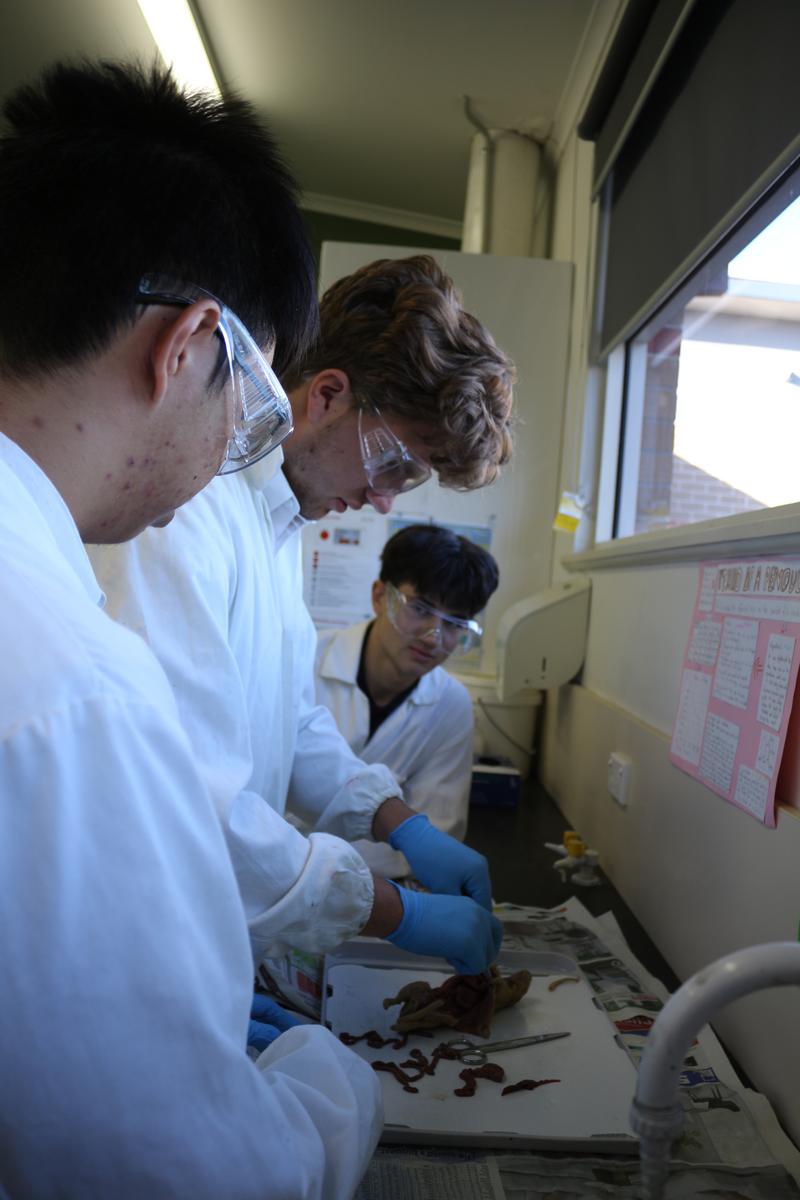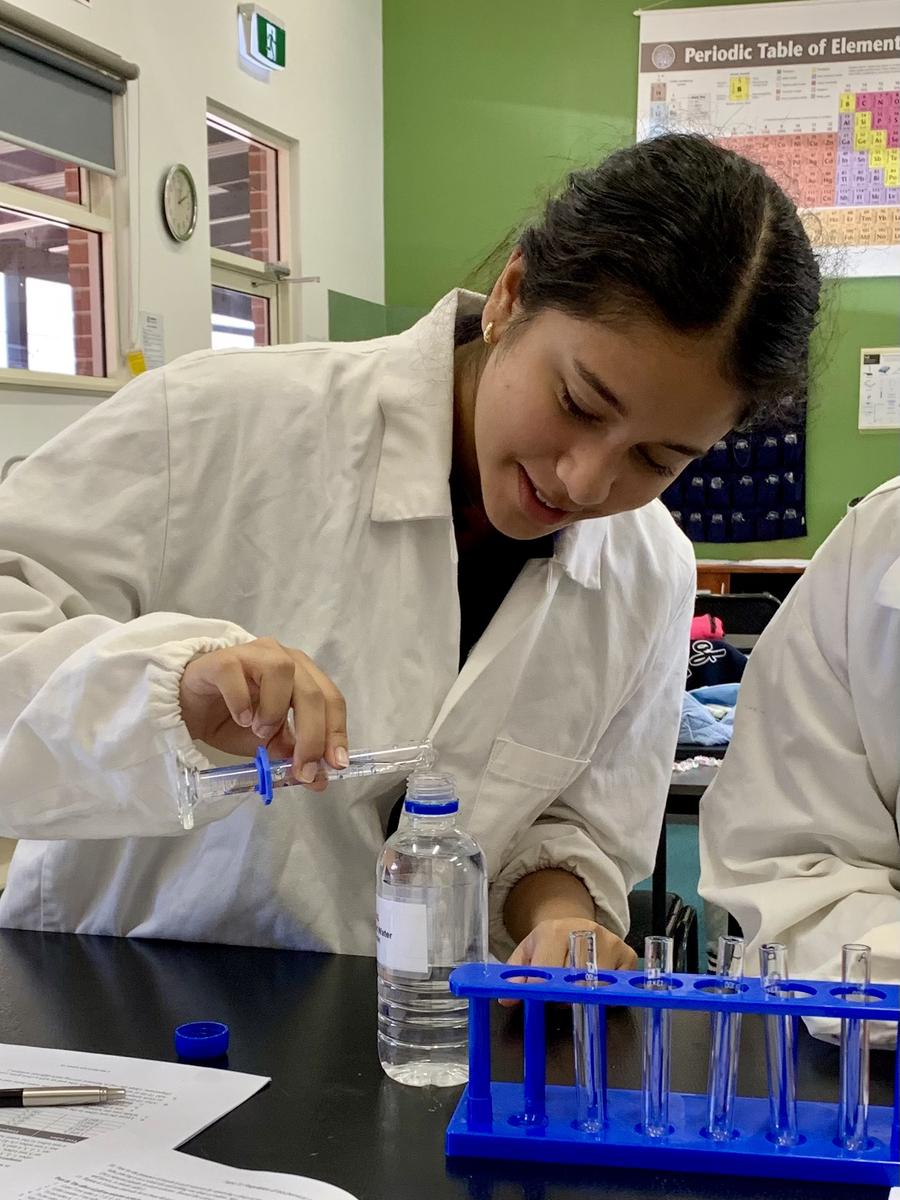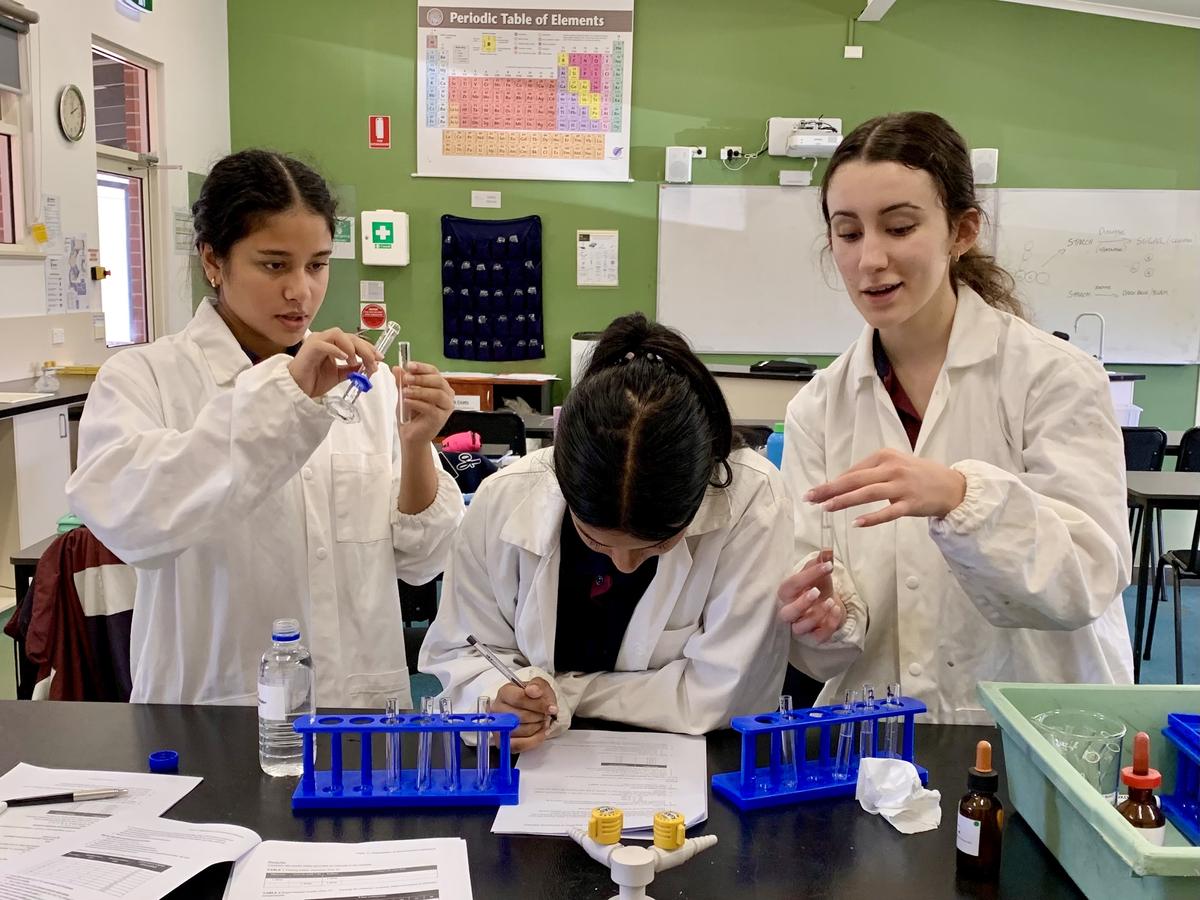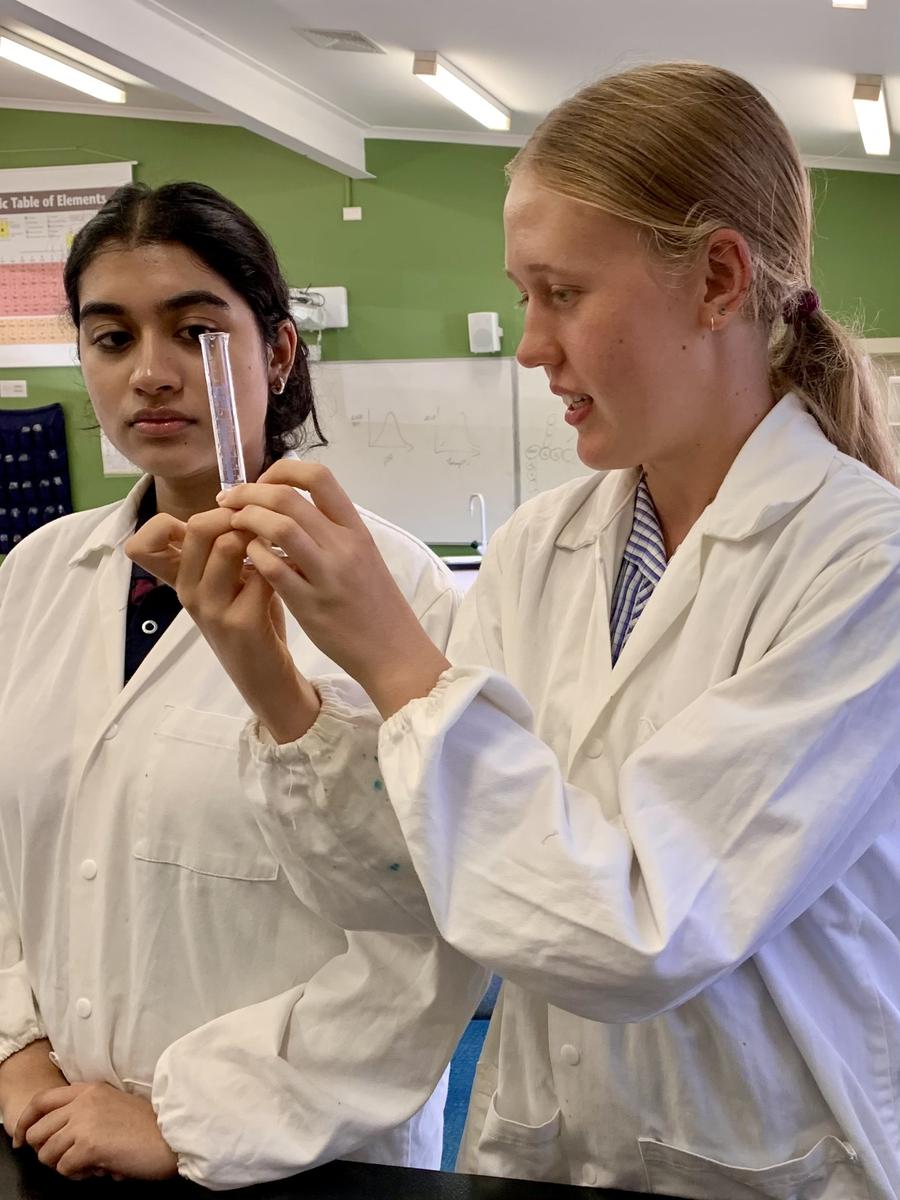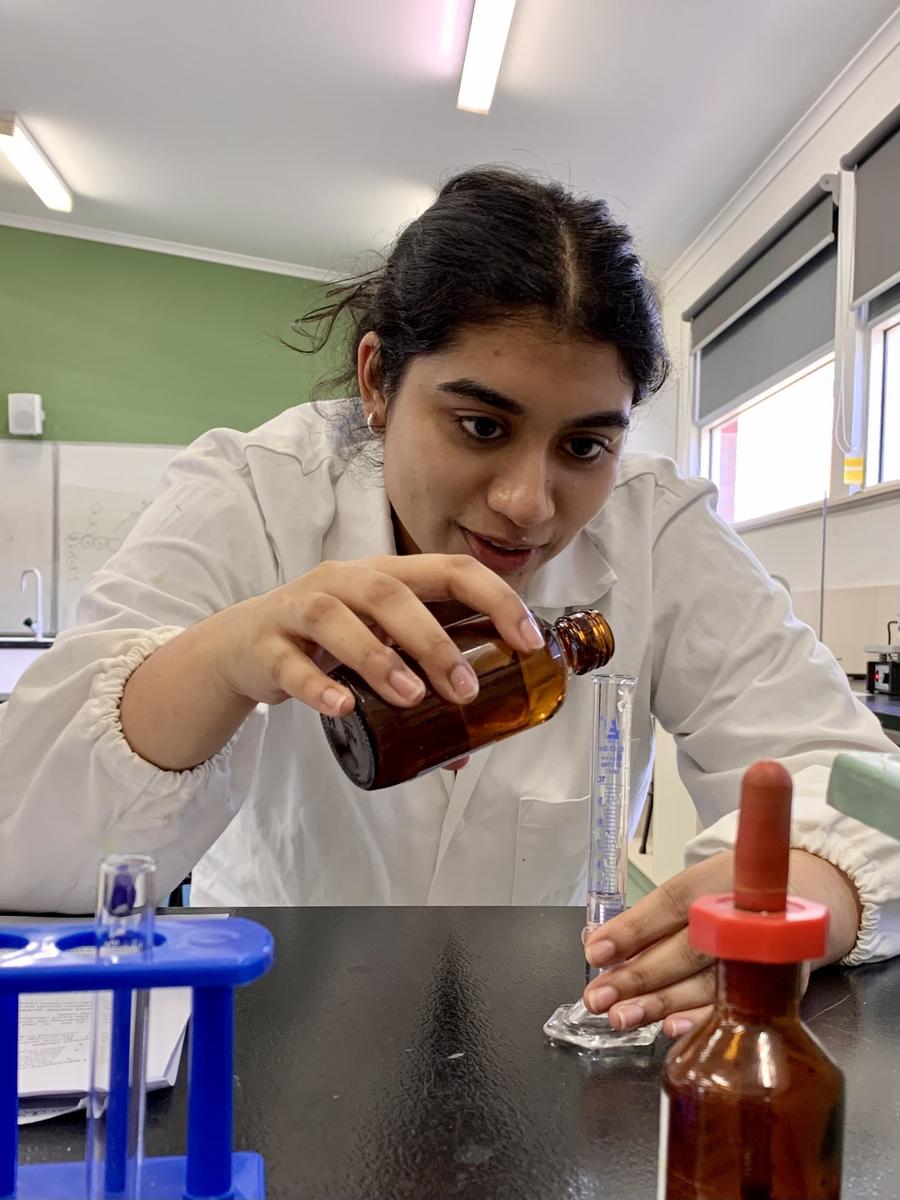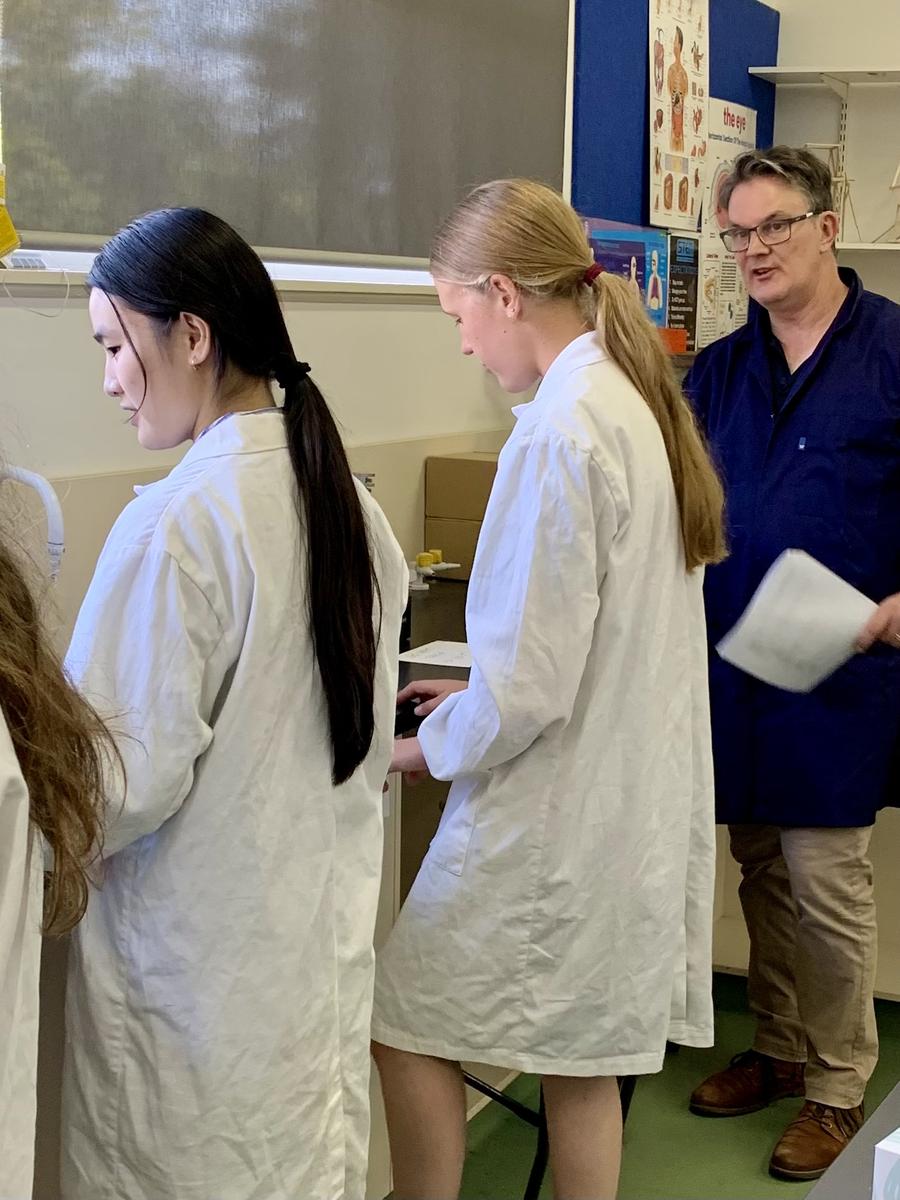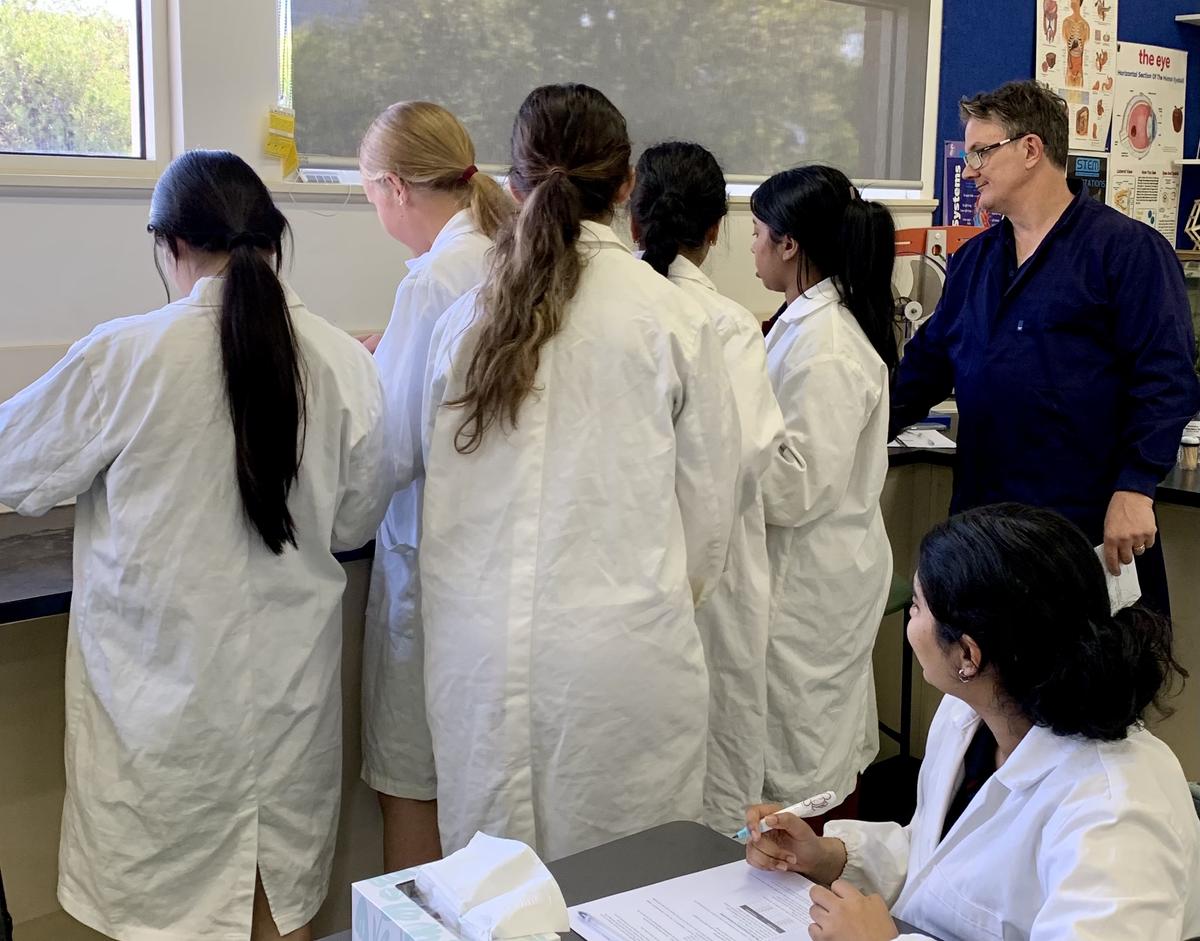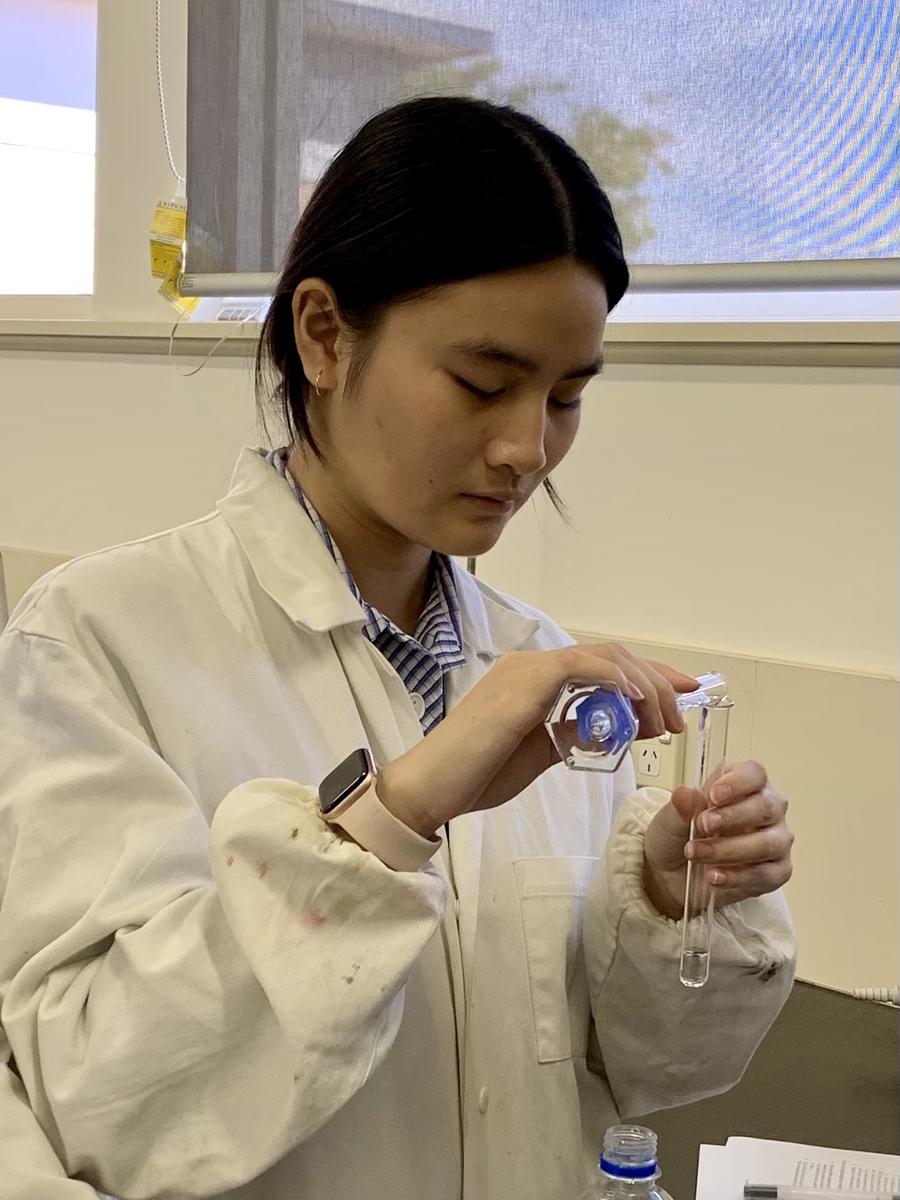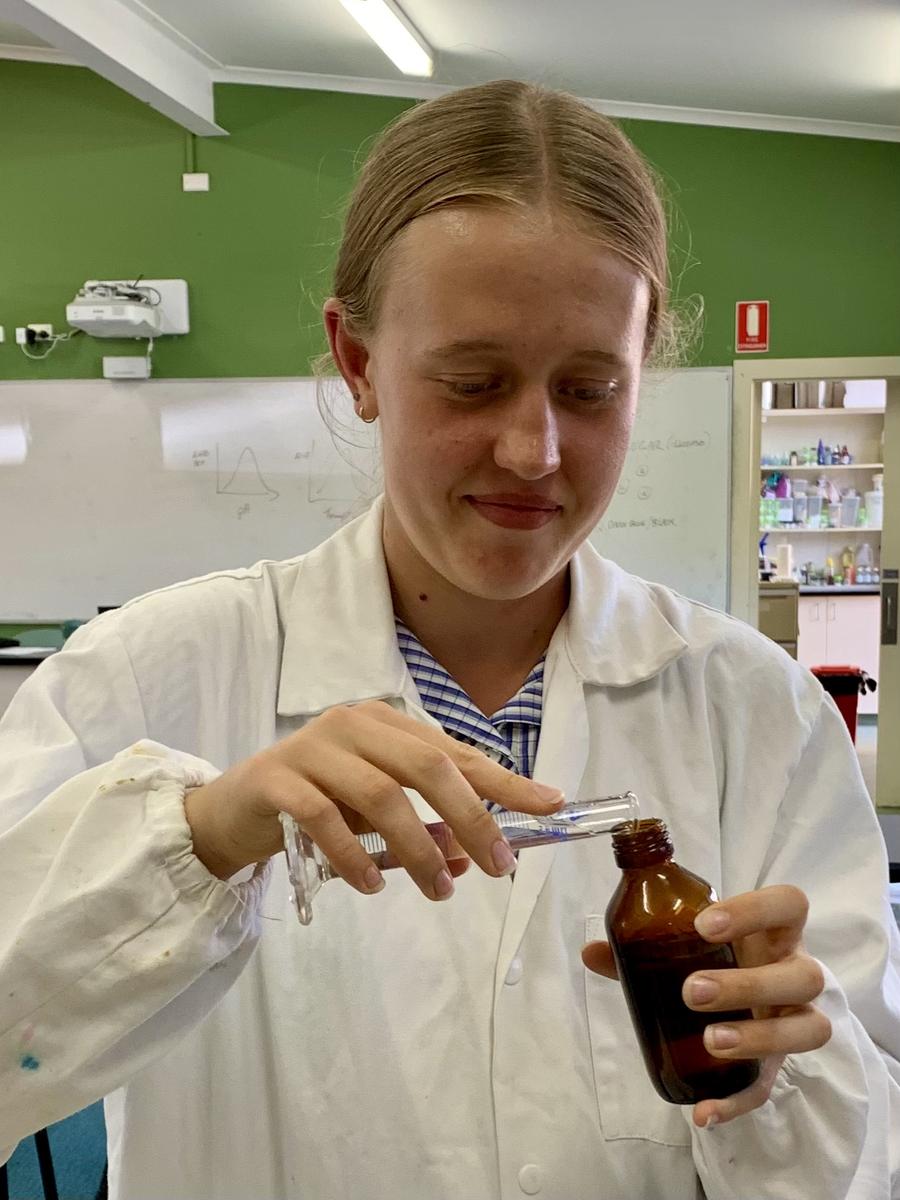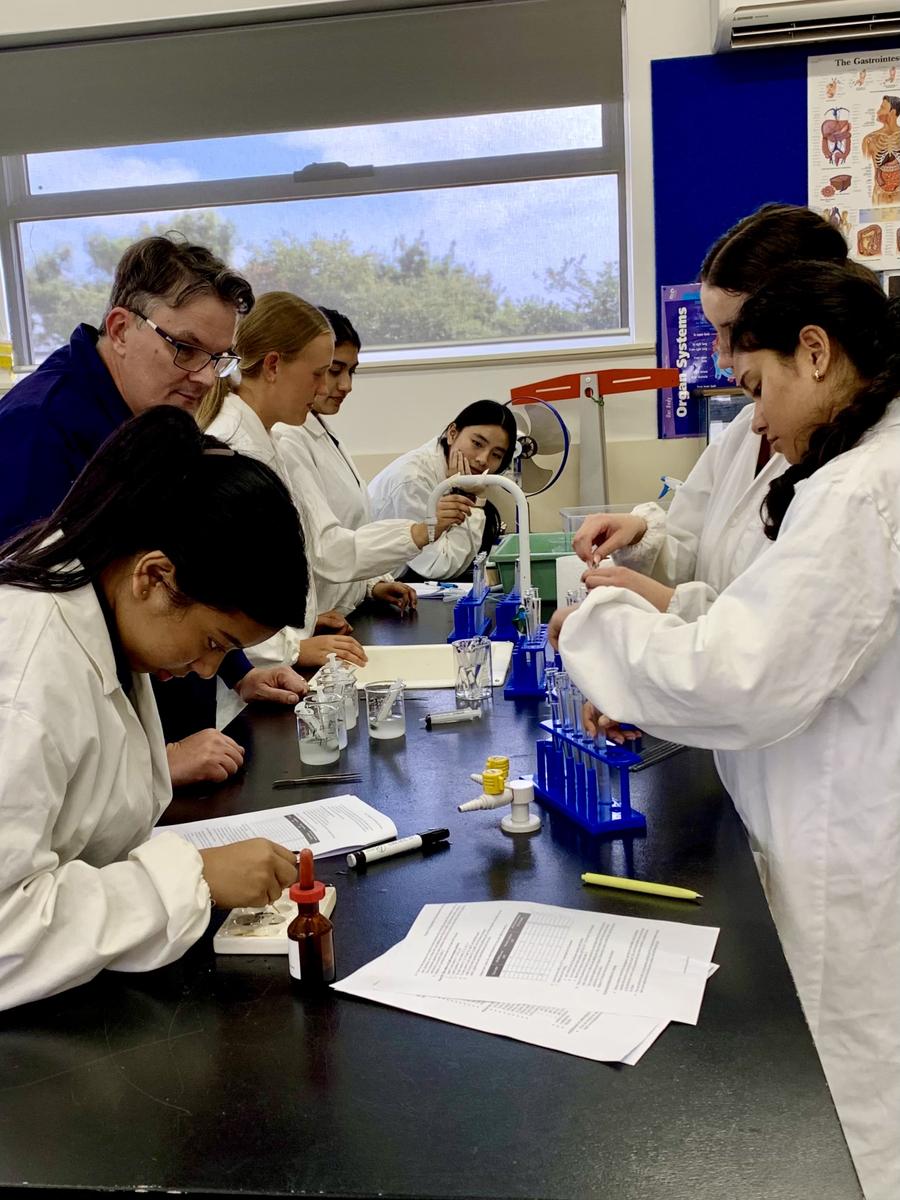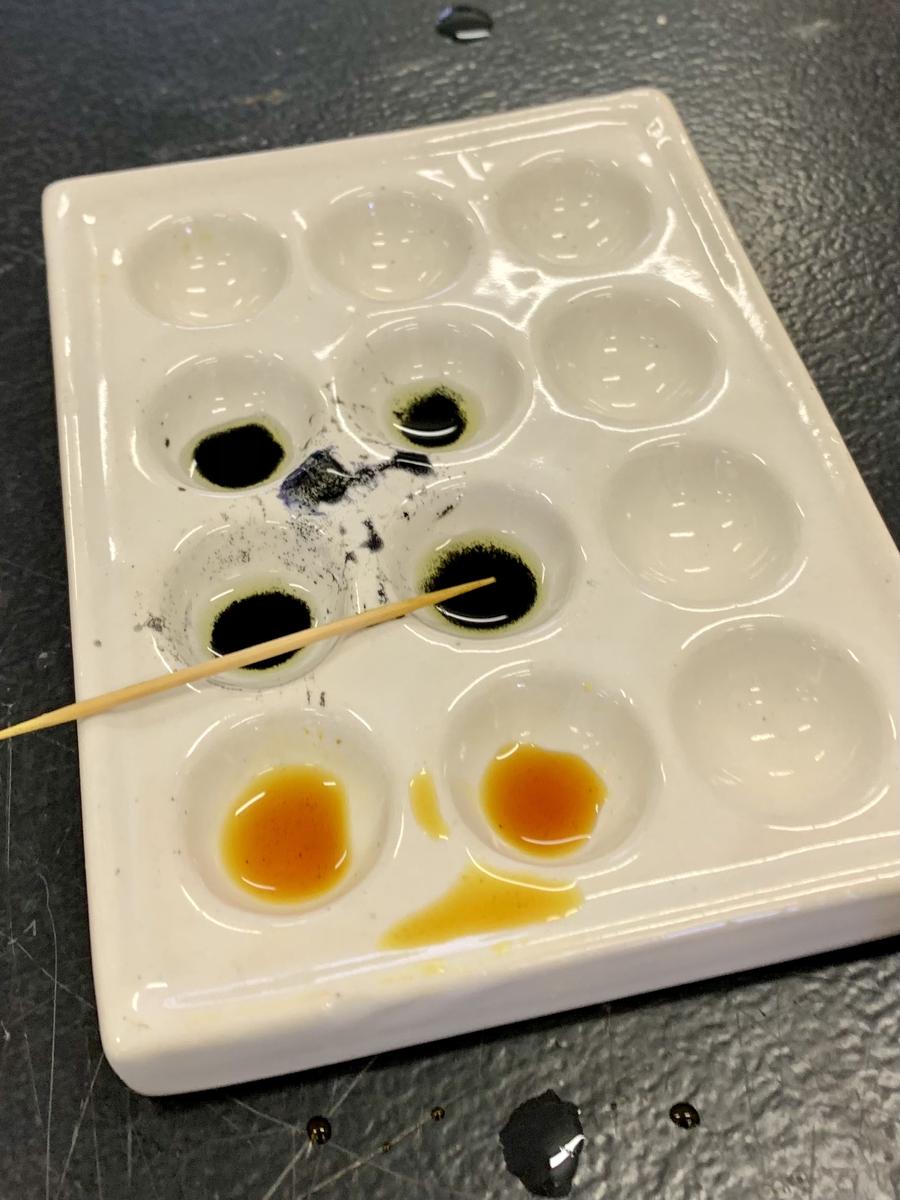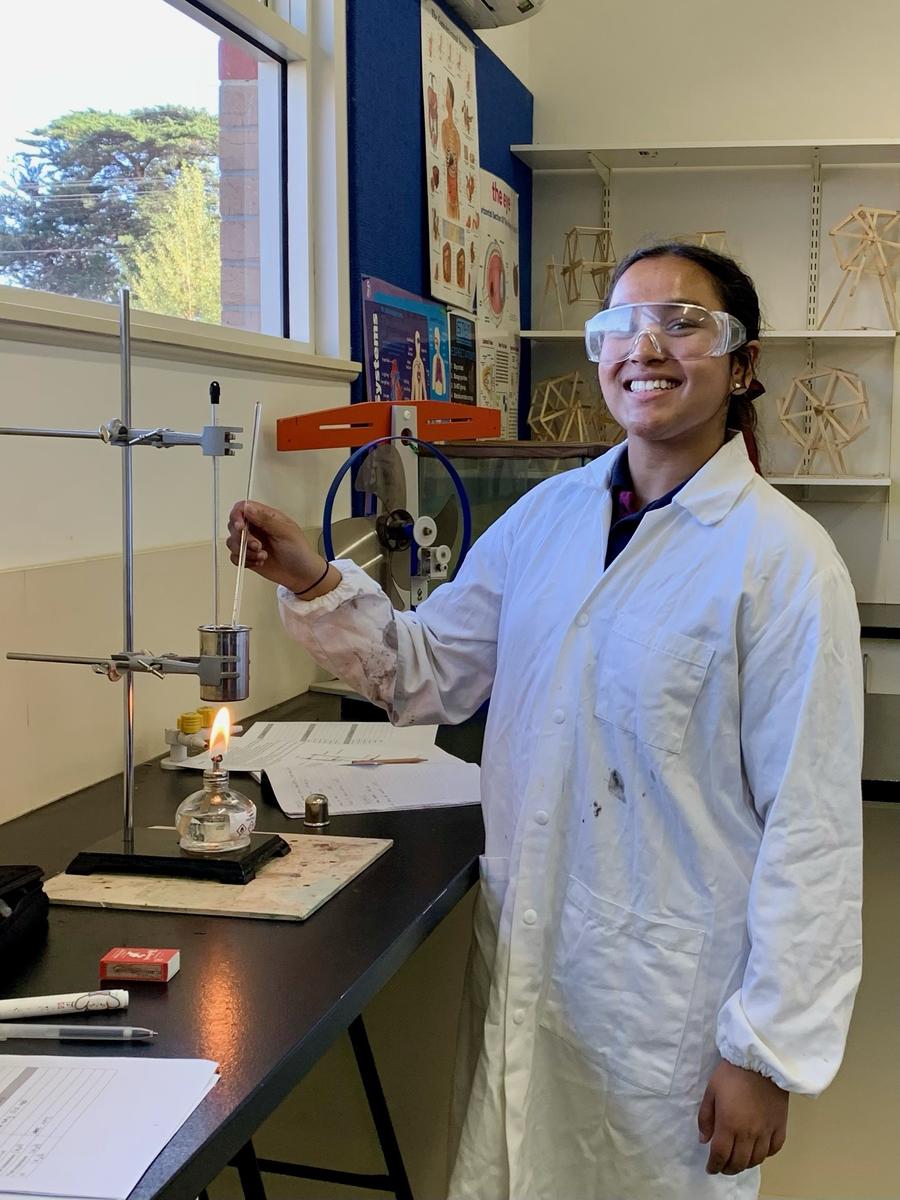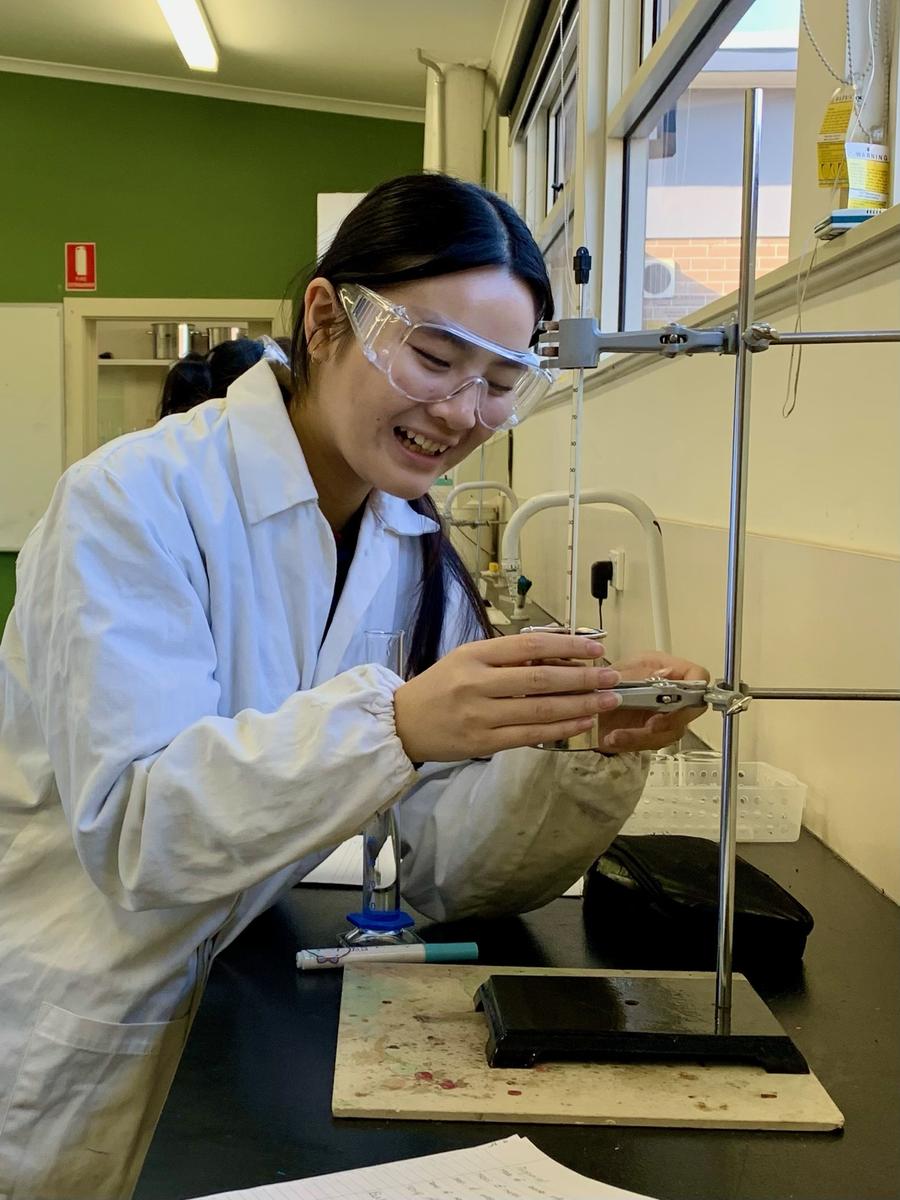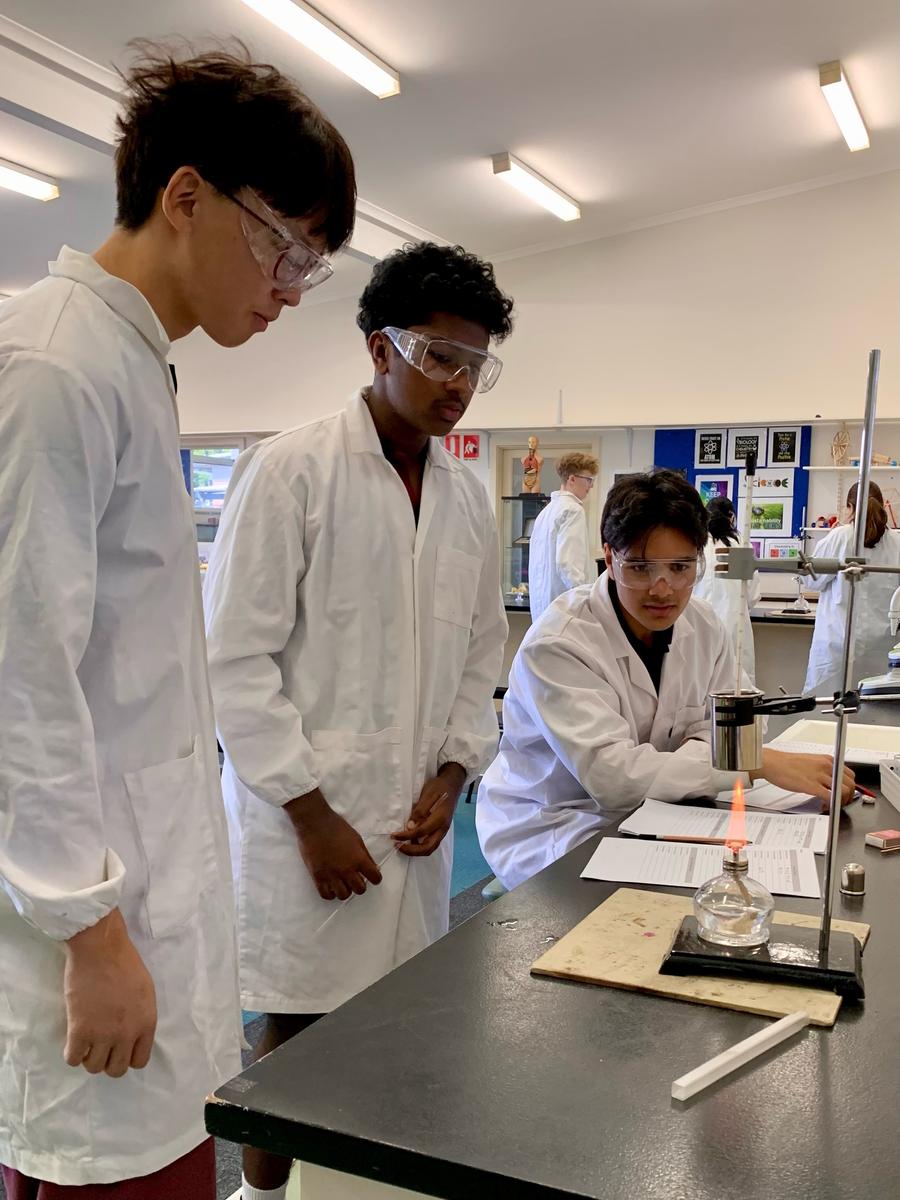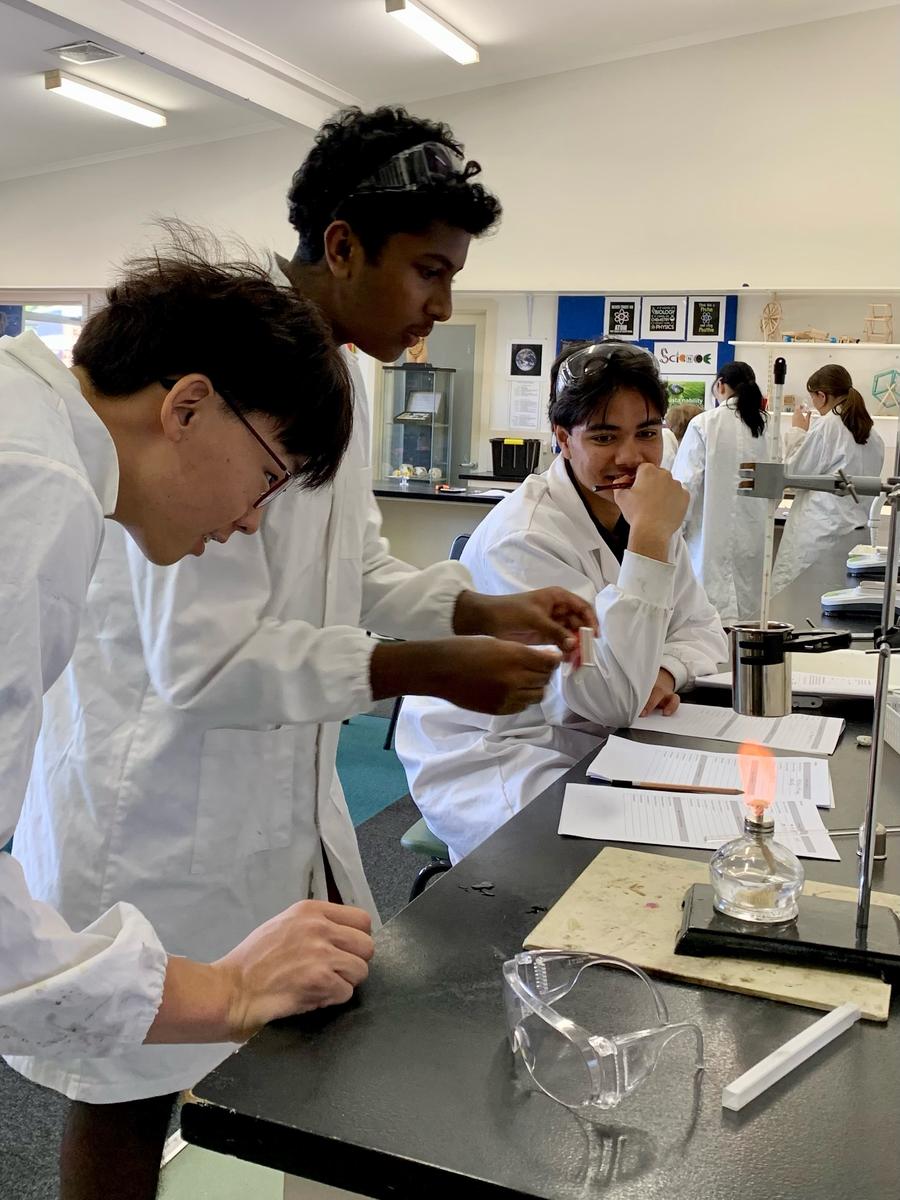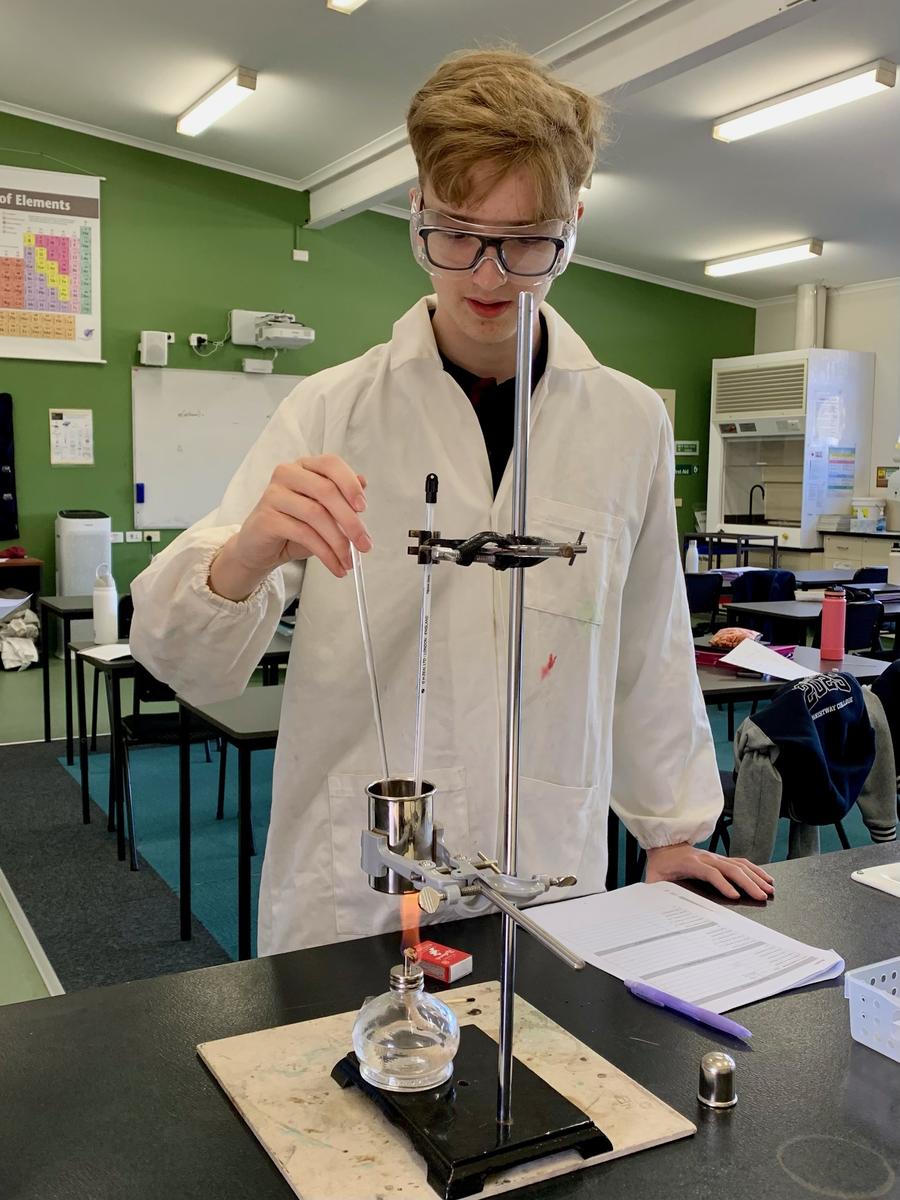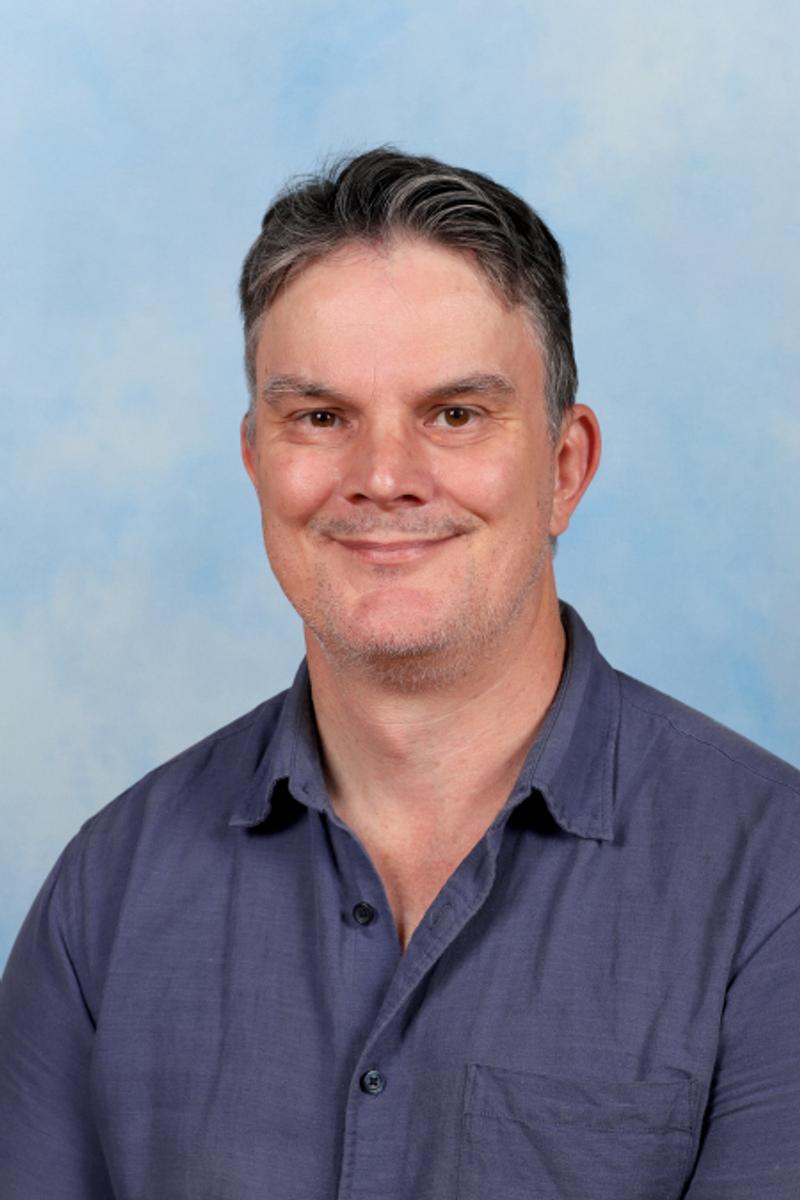Secondary Science

Year 11 Unit 1/2 Biology
On Tuesday 1 April, Year 11 biology students undertook rat dissection. The learning that occurs courtesy of a dissection is vastly different to that which occurs in a typical lesson. Having just finished studying the digestive system, dissection gives the students first-hand experience in seeing the subject matter. Such a hands-on learning environment can impart an appreciation and understanding of anatomy, unparalleled by second-hand teaching techniques.
Many students find it much easier to learn when carrying out physical activities, and this helps them to more fully engage with the subject matter being studied. Hands-on dissection allows students to see, touch and explore the various organs of the digestive and other systems. Seeing organs in vivo and understanding how they work within a single animal may strengthen students’ comprehension of biological systems. When applied to their own bodies, this may then translate to a greater understanding of human biology.
Year 12 SAC Biology
In Year 12 Biology, students explore the vital role of enzymes in living systems, with a particular focus on their involvement in processes like photosynthesis and respiration. In a recent practical activity, students investigated how changes in temperature and pH affect the rate at which the enzyme diastase breaks down starch (a glucose polymer) into individual glucose molecules. Through this experiment, they determined the optimal temperature and pH for diastase activity and observed enzyme denaturation firsthand.
Year 12 Chemistry
In the first half of Unit 3, Chemistry students delve into the analysis and comparison of various fossil fuels and biofuels as energy sources for society. During a recent practical, students tested the energy released by three different fuels. Each fuel was burned to heat water, and by measuring the water's temperature before and after heating, students were able to calculate the energy required to heat the water. This allowed them to determine how much energy was released by each fuel, providing valuable insight into their efficiency as energy sources.
Science Competition Prizes
A group of our Year 9 and 10 students participated in the "Think Science" contest last year and came in 3rd place, winning $400 worth of equipment. We bought a great DNA model, a magnetic whiteboard DNA modeling game, and some conductivity detectors. These will be valuable additions to our science collection.
Many thanks to Lisa Thomson and Shireen Vanbuskirk for giving up many lunch breaks to support this project and encourage our future scientists.
Dr Phil Bergen
Secondary Science Teacher
